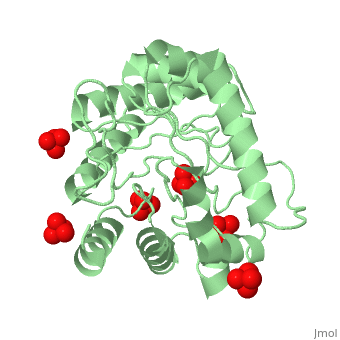Function
Dihydropteroate synthase (DHPS) catalyzes the condensation of 6-hydroxymethyl-7,8-dihydropteridine pyrophosphate to para-aminobenzoic acid (PABA) to form 7,8-dihydropteroate. DHPs is a key enzyme in folate synthesis. Folate is necessary for nucleic acid synthesis. DHPS is found in bacteria and not in eukaryotes. Hence, it makes a target to sulfonamide antibiotics[1]
- 7,8-dihydro-6-hydroxymethylpterin pyrophsphokinase-DHPS contains a dihydro-6-hydroxymethylpterin pyrophosphokinase domain at the N terminal and is named HPPK-DHPS.
Insights into the drug resistance induced by the BaDHPS mutations: molecular dynamic simulations and MM/GBSA studies [2]
Drug resistance has been an urgent problem that severely limits the therapy of current clinical microbial diseases. Sometimes, it generally correlates with mutations to the dihydropteroate synthase (DHPS) gene.
In the current study, we focus on the molecular dynamic behaviors and binding free energy calculations of form and B. anthracis dihydropteroate synthase (BaDHPS) to search for the relationship between mutation and drug resistance. Wt-BaDHPS is colored in khaki, mutated D184N complex is in green and K220Q complex is in cyan.
After 20ns MD simulations on the , it is obvious that . Only Loop 1, Loop 2 and Loop 7 are colored, ligand DHP-STZ is colored in the same color as the corresponding protein: for Wt-BaDHPS is colored in khaki, for mutated D184N complex is in green and for K220Q complex is in cyan. Mutation will cause conformational change, which mainly locate on some loop region around the binding site (Loop 1, Loop 2 and Loop 7). These results may be helpful for further drug resistance and de novo drug design investigations.
3D structures of dihydropteroate synthase
Dihydropteroate synthase 3D structures

